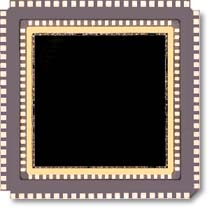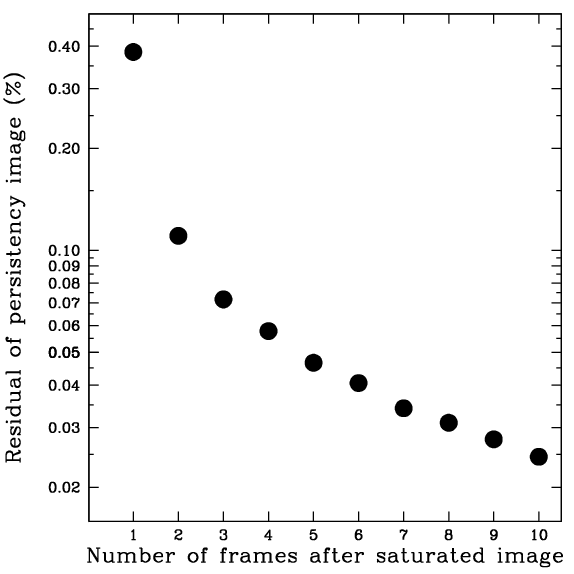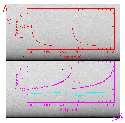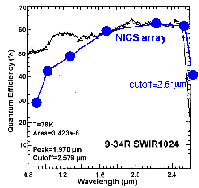NICS - Detector
 |
The detector is a Rockwell 1024x1024 HgCdTe Hawaii array which, alike other such devices used in various astronomical instruments, has some peculiar characteristics which should be kept in mind when collecting and reducing the data. |
Persistency and memory effects (changed on Feb06) |
|
 Evolution of the level of persistency (ghost) signal after a strongly saturated frame. Please note that the level of persistency has decreased be about a factor of 3 after the new acquisition electronics (FASTI-NICS) has been put into operation in Feb 2006. |
The array multiplexer has a stubborn attitude to remember whatever
strong signal was recorded in the previous frame(s).
For example, the first dark exposure taken after a saturated image
will still show a ghost relic of the previous frame at a level of
up to 0.4% of its original intensity regardless of the time elapsed
betweeen the two frames.
This ghost image will also persist in the subsequent frames with intensity
slowly fading down to below the noise level (see figure on the left). |
Bias |
|
 A typical 60s dark frame with cuts along the two axes |
Contrary to standard CCD devices, the "bias" of this detector
is not uniform over the array, but has a distinct horizontal pattern with
pronounced maxima at rows Y=1 and Y=513. Moreover its level
is not constant along a row but increases with X (see for example the figure here). |
Efficiency versus wavelength |
|

|
The values displayed here (blue dots) were determined from measurements of standard stars both in imaging and low resolution (prism) spectroscopy. The data were corrected for the transmission of the optics, of the filters and prism and normalized to the value at 2.2 micron given in the typical efficiency curve (black triangles) which was formerly available at the Rockwell web site. Evident and somewhat unexpected is the quite rapid decrease of efficiency below 1.4 microns which translates into a significant loss of sensitivity in the J and Y bands. |
For any comments please contact Vania Lorenzi.

